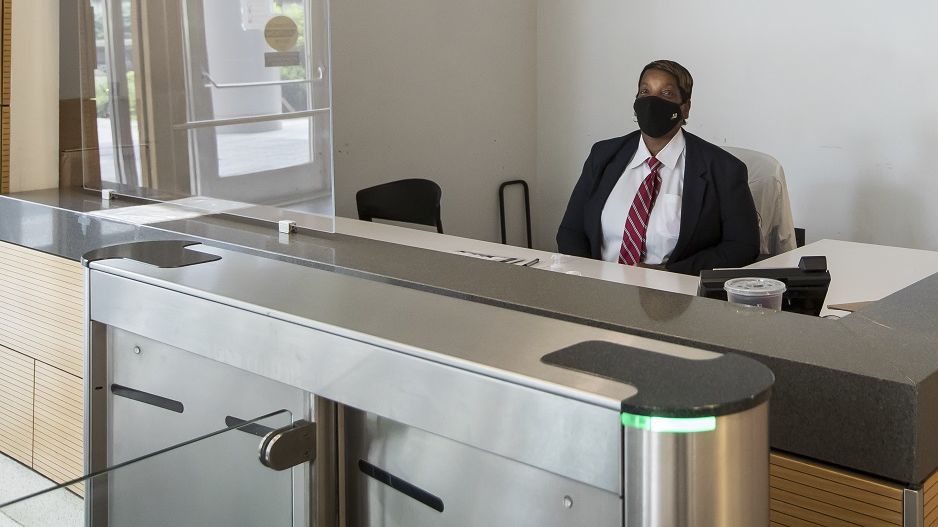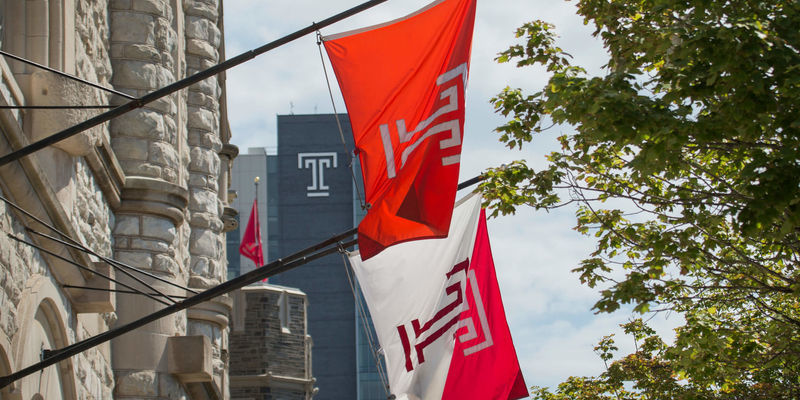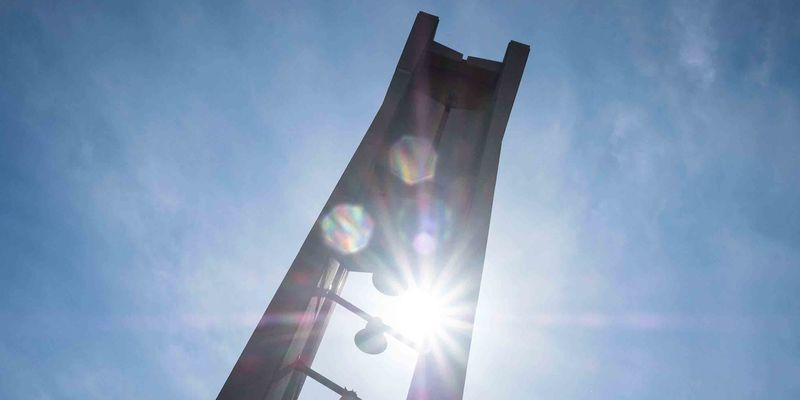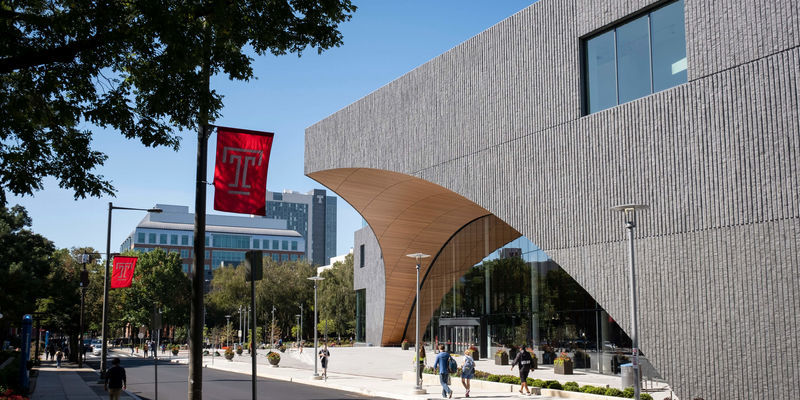Facial coverings at Temple: where, when and why
Learn about what guidelines are in place for wearing facial coverings when on and near campus.

When you use a facial covering, you’re doing your part in preventing the spread of COVID-19. But why is covering your mouth and nose so effective and so important? A covering can stop infectious particles from entering the air when someone talks, coughs or sneezes. When you wear a mask, you are protecting others and they are doing the same service for you when they wear theirs. Facial coverings are most effective when it’s truly a community effort.
And, it’s important to remember that it’s not always easy to identify who is carrying the virus. Someone could be pre-symptomatic or asymptomatic, which means that a mask provides a barrier between the virus and other people.
It’s clear that masks, along with other public health measures, can help keep our Temple community and neighbors safe and healthy, though where and when to wear a facial covering isn’t always clear.
Here are nine guidelines for wearing masks on campus and in our surrounding neighborhood.
1. Face coverings must be worn by all students, faculty, and staff in all classrooms, public and shared spaces on campus (think Charles Library, green spaces, etc.), and in areas where physical distancing of six feet or more cannot be observed, for example taking an elevator or in a narrow hallway.
2. Individuals in a building space by themselves, such as in an office that is not shared by others, may remove the face covering. It will need to be donned again when leaving that space.
3. Physical distancing of six feet or more should be maintained as much as possible in all university building spaces and outdoors. Inside buildings, when maintaining a distance of six feet, or two arms’ length is difficult, individuals must wear face coverings, avoid prolonged contact or conversation, and move swiftly into a space with lower density (think more space, fewer people).
4. When outdoors, individuals must wear face coverings when physical distancing cannot be maintained. This includes off-campus areas, too. It’s our responsibility to protect our neighbors.
5. While eating, and when wearing a mask is not possible, individuals must stay at least six feet apart in order to prevent viral transmission. Physical distancing, also referred to as social distancing, involves maintaining a physical distance of six feet, or two arms’ lengths, between persons.
6. When instructing students, and to facilitate teaching, faculty may substitute face shields for face coverings. Physical distancing must be adhered to when using a face shield.
7. All students in the classroom should wear face coverings for the entire class.
8. Individuals who are unable to wear face coverings due to a health condition or disability should contact Disability Resources and Services to discuss remote learning options.
9. In addition to face coverings, other public health precautions must be observed by the whole community, including frequent, thorough hand-washing or sanitizing, which you should be sure to do before you put on and after you take off your facial covering. Even while using facial coverings, it is still critical for the Temple community to maintain physical distancing, engage in regular cleaning and disinfecting procedures in campus buildings, and encourage or require students, faculty and staff to stay home when they are sick. All of these actions together help to reduce the risk of spreading the virus.
These guidelines are issued in accordance with Temple’s Infectious/Communicable Disease policy and Community Health policy as well as other applicable policies. Read more about protocols for facial coverings on and near campus. (You'll need your Temple login information to view the full protocol document on TUportal.)


